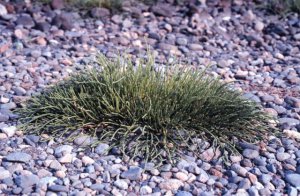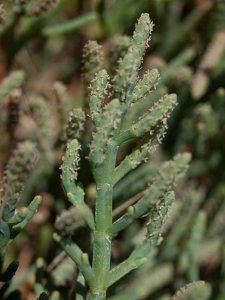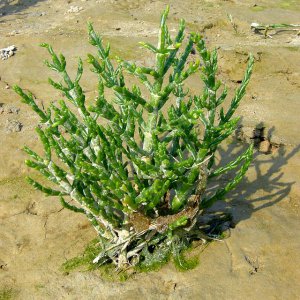What is Pickleweed?
Salicornia virginica is the scientific name for the plant known as pickleweed. Pickleweed is also known as virginia glasswort and is a variety of saltwort. This variety of saltwort is a perennial and is most commonly found in areas of high salt content in the soil, which include salt marshes. Pickleweed is native to a vast array of areas, stretching from both coasts in North America, from regions in Canada to regions in Mexico.

Brief Identification
Pickleweed is a part of the Amaranth family. There are only a few species that occur in North America, distinguishing between species can be very difficult but identification of plants as being within the genus Salicornia is much easier. This species of saltwort reaches an average height of around one foot but has been noted to grow between eight and 35 inches.
The plant received its common name, Pickleweed, based on its taste and appearance. Pickleweed is a variety of saltwort that is primarily a deep green color, similar to succulents and cacti. Most saltworts share the characteristic of having knobby branches and no flowers. The branches or leaves as they are sometimes referred as are bean-like in shape and are connected by joints. Based on their shape, you might have heard people refer to these plants as “sea beans”, as they are incredibly salty.
Edible Uses
These leaves are the edible portions of the plant and have been harvested for centuries for culinary, industrial, and medicinal uses. The leaves can be eaten either cooked or raw, and are most often used in salads. If you choose to cook pickleweed, however, be sure not to cook the
“beans” for more than a few minutes, as their desired texture will turn mushy and unappealing quickly. In the cooking process, it can be helpful to clean the plant particles prior by blanching the pieces, first by boiling them for 30 to 90 seconds, then by placing the boiler parts in ice water. This will help to clear any bugs and bacteria that may have latched onto the nutrient-rich plant.
When harvesting, it is important to remember the status of the plant, as some varieties of saltwort are higher on the endangered species list than others. Pickleweed is not recorded to be threatened or endangered, but be sure to only harvest from the tops and around the plant, and avoid the reddish portions, as these parts will have a harder texture.

Other Uses of Pickleweed
Pickleweed is also known as virigina glasswort because of the history that this variety of saltwort has. Through the 16th and 18th centuries, pickleweed was utilized as a source of sodium bicardonate, or soda ash. The ashes from the burnt plant material would then be used in the processes of soapmaking and glassmaking. However, this use of pickleweed was then discontinued in the 19th century, and replaced with other materials.

As stated earlier, pickleweed is quite salty in taste, and crunchy in texture, making it a great wild addition to various types of salads. Since the plant is naturally salty, it would be best suited in salads that are comprised of lighter or blander tasting ingredients. Pickleweed can also be prepared in similar fashion to green beans as well, just by roasting them lightly with oil. Another way to prepare pickleweed is to dry the plant parts and grind them down, then preparing a tea with the dried parts, or used as a salt alternative.
Using pickleweed in the culinary way is the best way to reap the medicinal benefits, as pickleweed is packed with a variety of essential minerals and vitamins. Minerals found in this plant include magnesium, potassium, sodium, and calcium; vitamins include A, B, and C. With help from these vitamin sources, pickleweed has been used to treat rheumatism, arthritic pain, msucle contraction, skin and tissue repair, and general swelling.
—————Written by Jordyn Lee
Jordyn Lee is a freelance writer with a background in herbalism and a passion for sustainable living. She has a Bachelor's degree in Communication Studies and continues to learn more about health and nature. Connect with her on (LinkedIn) or Freelancer Profile (upwork.com).
Many of our readers find that subscribing to Eat The Planet is the best way to make sure they don't miss any of our valuable information about wild edibles.
See our privacy policy for more information about ads on this site






